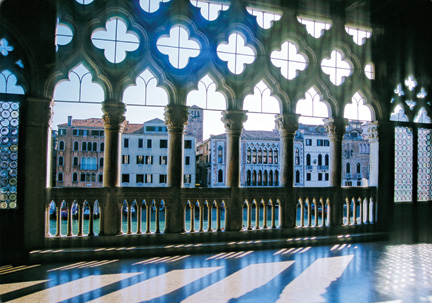Outer Beauty, Inner Joy: Contemplating the Soul of the Renaissance began from my love of going to Italy, loving what I saw and felt, and wanting to know and understand more. I’ve always been a student of religion and spirituality, even when I was a child. My interest centered mainly on Eastern traditions. Still, when I grew older, it was Italy that kept calling me back. Yes, it’s beautiful and I loved the language, the art, and the people, but it seemed there was something more to it. Little by little I discovered what that “more” was.

I began to read some of the writings of the Renaissance and the works of modern scholars who study that period, and I found there was a connection between the art and architecture and the philosophical ideas. I wanted to create a book illustrating this connection and share a bit of my experience. Outer Beauty, Inner Joy is the culmination of many years of traveling to Italy and reading about the Renaissance. At the same time, I feel it’s just the beginning and that more books will come.
Some have seen the Renaissance as a time when our modern ideas about the nature of reality began, a time when the belief in other levels of existence began to fade away and the knowledge that came from scientific experiment taught us to “know better”–that is, to believe we can understand everything scientifically based on material ideas alone. But I find in the study of the Renaissance a harkening back to a time when the world was filled with poetry, mythology, and mystery–a time when everything was said to be connected, when everything was said to be divine, each part a mysterious spark of the whole.
As in all great spiritual traditions, an important part of Renaissance philosophy has to do with love. Italian Renaissance philosophers, following Plato, spoke of love as the creative force of the cosmos. Love is what draws people to each other, instills the desire to create children, and makes us want to help each other; but it is also the same force that makes writers want to write, philosophers and scholars want to study and learn, and artists want to paint and sculpt.
In the creations of the Renaissance I find a quality that makes them seem alive with the spirit of the artists and craftspeople who created them. I like to think that these artists were able to secure an ethereal essence in material form–the Anima Mundi ancient philosophers spoke of, the Soul of the World.
For me, any great work of art points to something beyond itself. As writer Veronica Brady says:
Art reminds us that life is stranger, more beautiful, demanding, joyous and painful than common sense knows. The holy then, is mysterious. It underlies the vision of tragedy and, indeed of any good novel, which gives us a glimpse into the mysteries of the human condition. Far from being unworldly or abstract, this mystery exists in the midst of our lives. www.ru.org/81brady.html#author
As philosophers and artists did during the Renaissance, I’ve always sought knowledge, insights, understanding, and wisdom wherever I could find it: in religious teachings, in experiences, in relationships, in art, in writing, in nature, in dreams. I look forward to exploring here more fully some of the ideas I touched on in Outer Beauty, Inner Joy, and I invite you to share your thoughts.
